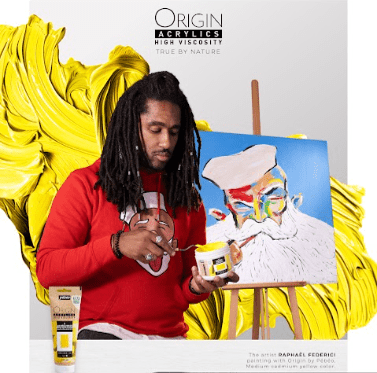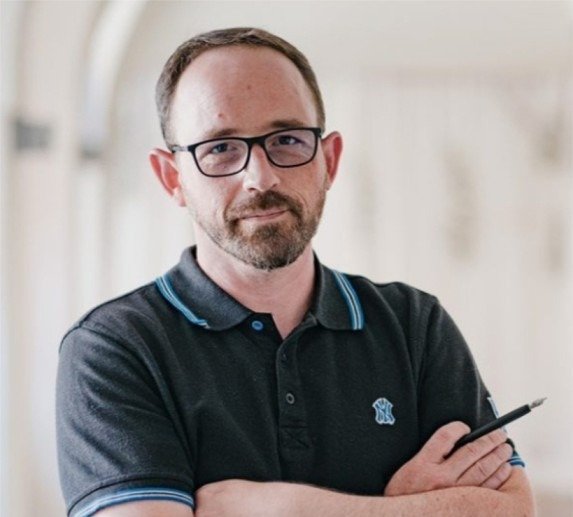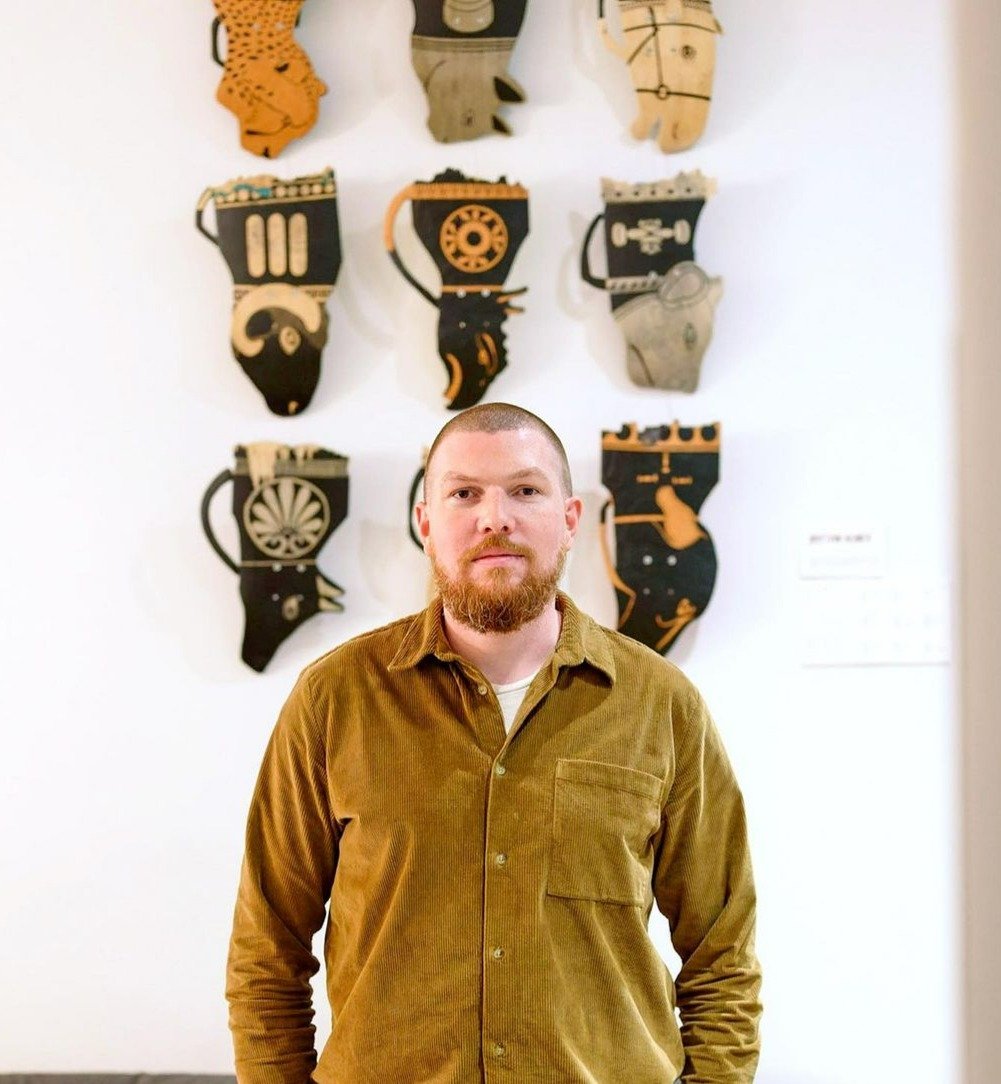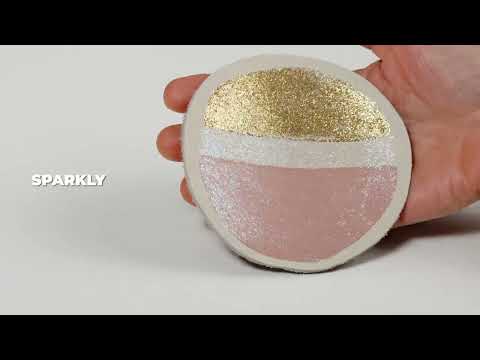PIOTR KLEMENSIEWICZ : UN TRAVAIL AUTOBIOGRAPHIQUE ET INTIMISTE
27/04/2021
Né en 1956 à Marseille, Piotr Klemensiewicz a fait ses études aux Beaux Arts ( ESBAM) et enseigne aujourd'hui dans la même école (ESADMM). après l'obtention du DNSEP en 1979, il fonde avec quelques artsites ( G.Autard, G. Fabre, F. mezzapelle....) l'atelier de lorette. En 1986, il quitte cet atelier au moment où la ville de Marseille le rachète et au moment où il rentre aux Beaux Arts comme enseignant. Il dit que l'enseignement a certainement influencé son travail, sans pour autant le contrarier. Aujourd'hui, il vit son travail de pédagogue comme un engagement, à l'image des professeurs qu'il a rencontré étudiant. A l'occasion de deux expositions à Montréal (1999 et 2000) il a effectué un long séjour et a enseigné à l'UQAM. Une école reste un lieu privilégié de débats et de rencontres, cependant la nécéssité de voyager reste indispensable. Il est représenté par la Galerie Baudoin-Lebon (Paris) où a lieu cette nouvelle exposition.
VOTRE NOUVELLE EXPOSITION A LIEU À PARIS, À LA GALERIE BAUDOIN LEBON. QUELLES SONT VOS NOUVELLES ŒUVRES ?
Piotr Klemensiewicz : Il y a, à la fois, de très grands formats qui recouvrent la plupart des murs de la galerie et une importante série de paysages que j'ai photographié et dont je recouvre la plus grande partie de la surface. Cette série qui se nomme «never been there» a été réalisée dans un autre atelier que j'ai à Berlin, et où le travail est devenu plus intimiste, plus autobiographique.Les grandes peintures poursuivent le travail polychrome des bandes et des recouvrements de fonds préalablement peints comme s'ils pouvaient demeurer des monochromes.

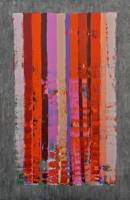
VOUS ÊTES UN ARTISTE QUI VIT À MARSEILLE MAIS VOUS AVEZ ÉGALEMENT UNE RÉSIDENCE À BERLIN, POURQUOI CETTE VILLE ?
C'est par hasard de l'histoire, lié à la seconde guerre mondiale, que mes parents nés en Pologne et tous deux résistants, sont arrivés à Marseille.Mon père a immédiatement épousé cette ville. Ma mère a attendu en vain un retour impossible dans son pays natal. Il y a quelques années et après de nombreux voyages, j'ai souhaité me fixer ailleurs. L'idée de dédoubler mon atelier m'a ouvert de nouveaux projets. Je n'irai pas en Pologne pour rembobiner le fil de la saga familiale et l'Europe du Nord m'a attiré. De Berlin je n'entendais que des choses positives et après une première visite la ville m'a séduit. La communauté artistique y est dense et internationale. La peinture est en pleine activité et a une histoire actuelle.
VOUS AVEZ EXPOSÉ ÉGALEMENT EN ASIE, CHINE, EN CORÉE … POUVEZ-VOUS NOUS DIRE D’OÙ VIENT VOTRE INSPIRATION ? COMMENT CONCEVEZ-VOUS VOS EXPOSITIONS EN ASIE ?
Piotr Klemensiewicz : C'est la Corée du Sud et les peintres que j'y ai rencontré qui m'ont permis de repenser mon travail. Là-bas, la peinture est une pratique beaucoup plus affranchie de questions sur sa légitimité, son passé ou son avenir. Elle est très autonome et interactive d'un point de vue physique et spirituel. Peu de spéculations sur sa mort prochaine ou son éternel retour... En Chine, le rapport au réel et aux images contemporaines est assez présent, voire brutal. Mais la virtuosité de certains artistes est troublante. Je ne fais pas de choix particulier quand un projet d'exposition se présente. Je remarque seulement que certaines séries de mon travail sont souvent préférées. Les «encriers» et les «tas» en particulier.
DANS VOS ŒUVRES, IL Y A TOUJOURS L’IDÉE DU MYSTÈRE. POUVEZ-VOUS NOUS EN DIRE DAVANTAGE ?
Piotr Klemensiewicz : C'est la part autobiographique dont je vous parlais au début. Autobiographique n'implique pas nécessairement narratif. J'ai déplacé de nombreuses histoires vécues à travers un spectre pictural élaboré petit à petit. Certaines touchent au politique, à la philosophie, d'autres au décoratif. Il y a là l'idée que le pictural dépasse les motivations psychologiques. Peindre le plus infime décalage avec le réel est toujours un enjeu. Il peut s'avérer bavard et démonstratif, ou au contraire, être l'arête du projet artistique.
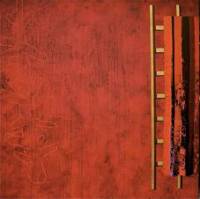

LES SUPERPOSITIONS DE COUCHES, LES ENCOMBREMENTS SONT TRÈS PRÉSENTS DANS VOS ŒUVRES. POURQUOI ?
Piotr Klemensiewicz : Certaines tribus indiennes accrochaient des branchages à la queue de leurs chevaux pour effacer les traces de leur passage. D'empreintes, il ne restait que de longues traces effilées. Je considère souvent les gestes de la peinture dans cet entre-deux d'apparition et d'effacement. Quelque chose de représentée, ou une surface abstraite, recouvre toujours sa surface équivalente et qui préexiste au résultat final. Il n'y a pas de maison, de bande, ni d'échelle. La série des «encombrements» était la plus figurée possible mais réfutait l'idée d'un sujet. Je peignais des fragments d'objets excentrés dans le tableau. Au centre, il n'y avait rien de représenté. Faire la place à la peinture était mon souhait.

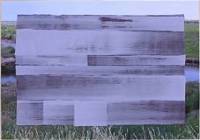
TECHNIQUEMENT, DE QUELLE MANIÈRE ABORDEZ-VOUS LA RÉALISATION DE VOS ŒUVRES ?
Piotr Klemensiewicz : Avec ces éléments que je viens de décrire et qui articulent parfois, dans le désordre, les étapes du tableau. L'écart entre l'intention et le geste est formidable. Je ne cherche pas de règles qui pourraient rendre ma démarche mécanique et programmable. Pratiquement, l'acrylique, et cela à toutes les saisons, me permet une variation de textures qui utilisent les propriétés du médium riches en possibilités et qui me dictent parfois le choix à faire.
AVEZ-VOUS DES PEINTRES DE RÉFÉRENCE ?
Piotr Klemensiewicz : Trop ou pas selon les jours. Ces dernières années, je communique souvent avec un artiste sud coréen, Lee Kang So. Sa trajectoire est passée par la performance, la vidéo. Mais aujourd'hui, c'est avec la photographie et la peinture qu'il travaille. Quand je dis je communique, il s'agit en fait que d'échanges de regards sur nos peintures ou nos photographies. J'aime la peinture dans son plus large éventail et j'arrive à la ressentir tout autour de moi, avec ou non, des pinceaux à la main. C'est une pratique artistique qui développe avant tout notre perception. Beaucoup d'artistes participent à cette construction.
LA PREMIÈRE FOIS QUE J'AI VU VOTRE TRAVAIL, VOUS PEIGNEZ DES NUAGES ET VOUS AVEZ APPELÉ CE TABLEAU «MENSONGE». QUELLE EST LA SIGNIFICATION ?
Piotr Klemensiewicz : Le mensonge m'intéressait comme chose mentale, concept pictural. Il faut passer alors par un dessin, une forme, un signe. J'ai pensé à une forme fermée. Le nuage est un objet intensément pictural et le mensonge est un élément constitutif de l'idée de représentation dans la peinture. Parallèlement, j'avais demandé à des amis de dessiner ce mot, comme une allégorie. Tous m'ont proposé des formes différentes mais toutes étaient fermées, closes. Comme la figure du nuage persiste, j'ai peint une série de «tas» (de peinture) sur lesquels ce mensonge semble flotter.
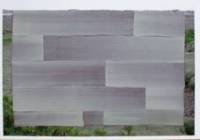

VOTRE TRAVAIL PASSE PAR UNE UTILISATION IMPORTANTE DE LA COULEUR. QU’AIMERIEZ-VOUS FAIRE QUE VOUS N’AYEZ PAS DÉJÀ RÉALISÉ?
Piotr Klemensiewicz : Je pense que les couleurs ont un langage visuel propre et qui fait taire les mots. Selon les parties du monde et les cultures, la couleur se pose, plus ou moins, comme le principal vecteur du langage pictural. Ce n'est pas le cas en Occident, sauf si on l'assimile à des catégories qui, avec le temps, s'épuisent d'elles-mêmes : fauvisme, expressionnisme... L'utilisation de trop de couleurs semble pour certains un danger. Deux ou trois teintes paraissent alors plus impérieuses et solides. J'ai compris cela très tôt et j'ai voulu prendre le risque d'une certaine démesure. C'est un choix esthétique et politique et non une question de tempérament... Je voyage beaucoup mieux avec mon travail en ayant fait ce choix. Depuis quelques années, grâce à la société Pébéo, je peux explorer la question picturale avec des moyens substantiels. Le développement des nouvelles composantes me fait aussi réaliser d'autres textures d'où émergent d'autres couleurs, d'autres projets.
Produits Connexes
à lire aussi
@PEBEO Suivre Pébéo sur Instagram
Newsletter
Inscrivez-vous à notre Newsletter et restez informé de nos actualités. Pour en savoir plus sur la gestion de vos doneés personnelles et pour exercer vos droits, cliquez, ici
